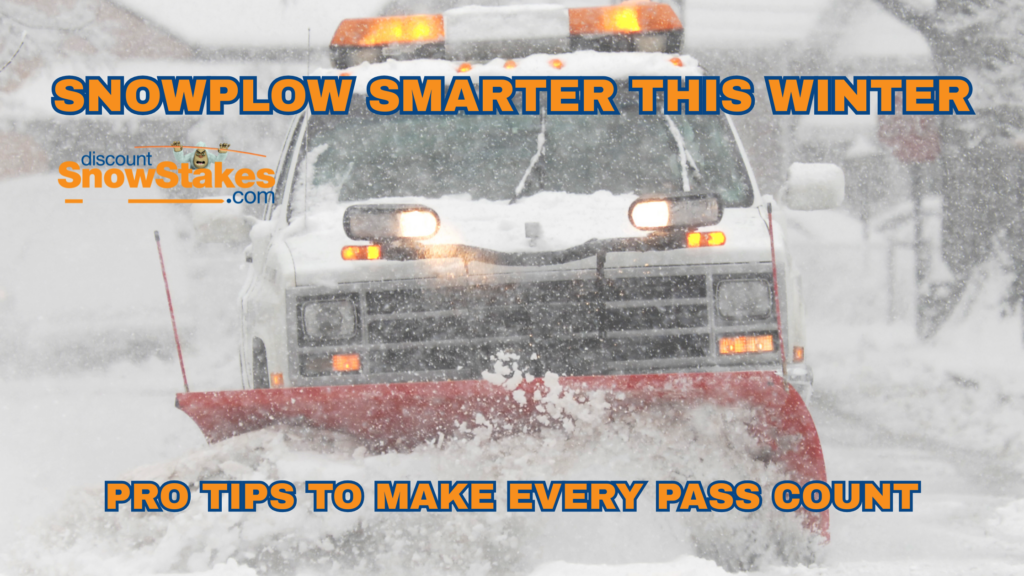
Snowplowing is more than just pushing snow. It’s a skill that requires strategy, timing, and the right equipment. Whether you’re a seasoned contractor or new to the snow removal game, learning the right snowplow techniques can save time, reduce wear on your vehicle, and deliver better results for your clients. Below, we break down essential plowing methods, safety advice, and professional tips that’ll keep your jobs efficient, clean, and safe all winter long.
Back-Dragging: The Essential Technique for Tight Spaces
Back-dragging is one of the first techniques every plow operator should master. It’s ideal for tight areas like driveways, garage entrances, or loading docks.
How it works:
- Approach the snow-covered area with your plow blade raised.
- Stop near the obstacle (like a garage door), lower the blade, then reverse slowly.
- Pull the snow backward two to three vehicle lengths at most to avoid overstraining your truck.
- Once clear, reposition the blade and push the snow pile forward to the sides.
Pro Tip: Invest in a plow with a back-drag edge for cleaner pulls and less scraping on delicate surfaces.
Windrowing: Your Go-To Method for Parking Lots and Roads
Windrowing is best for large, open areas. This method channels snow into long rows (called “windrows”) that you can easily move off-site or stack.
Steps to windrow properly:
- Angle your blade to the left or right based on where you want to pile snow.
- Drive forward in a steady pass, letting the angled blade push snow aside.
- As you reach the end, begin lifting the blade slightly to stack snow without stressing your plow’s electrical system.
Pro Tip: Keep your speed consistent. Too fast and you risk blade damage; too slow and you lose momentum.
Stacking Snow: Plan Ahead, Not Just for Today
Where you leave snow piles matters. Efficient stacking helps preserve usable space and prevents headaches later in the season.
Stack smart by:
- Keeping piles away from roadways and visibility zones like driveways or entrances.
- Leaving room for future snowfalls: your first pile shouldn’t block the next one.
- Avoiding low-drainage areas to prevent flooding during melting periods.
Important: Never push snow across roadways. In many areas, this is illegal and can result in fines.
Plowing Strategies for Driveways and Residential Areas
Residential clients value neat work and safety just as much as speed.
Best practices include:
- Push snow away from high-visibility areas. An example would be to avoid obstructing the homeowner’s line of sight of the road at the end of their driveway.
- Finish the job completely. Don’t leave slush behind that could freeze into black ice.
- Be mindful of property markers, landscaping, and curbs.
Working in Layers: Don’t Overload Your Equipment
Heavy, wet snow can be brutal on your plow. Using snowplow techniques like layering will protect your gear and improve maneuverability.
Follow these rough guidelines:
- Use the full width of the blade for snow under 2 inches.
- Use ¾ width for snow around 4 inches.
- Use ½ width for snow over 6 inches.
Pro Tip: Don’t wait until the storm is over, plow in stages. It’s easier on your vehicle and ensures better results.
Safety First, Always
Snow removal can be dangerous if rushed. Prioritize safety by:
- Inspecting your plow and truck before every shift.
- Wearing high-visibility safety gear.
- Watching for pedestrians, curbs, and buried objects.
- Keeping emergency equipment on hand, including lights, shovels, salt, gloves, and first aid.
Final Thoughts
The right snowplow techniques make a difference in both performance and safety. Whether you’re back-dragging a driveway or clearing a commercial lot with windrows, strategic plowing helps you complete jobs faster, protect your equipment, and keep your clients satisfied.
Need solid fiberglass snow stakes, safety gear, snow shovels, or walk behind salt spreaders? We’ve got you covered! Visit DiscountSnowStakes.com today!

